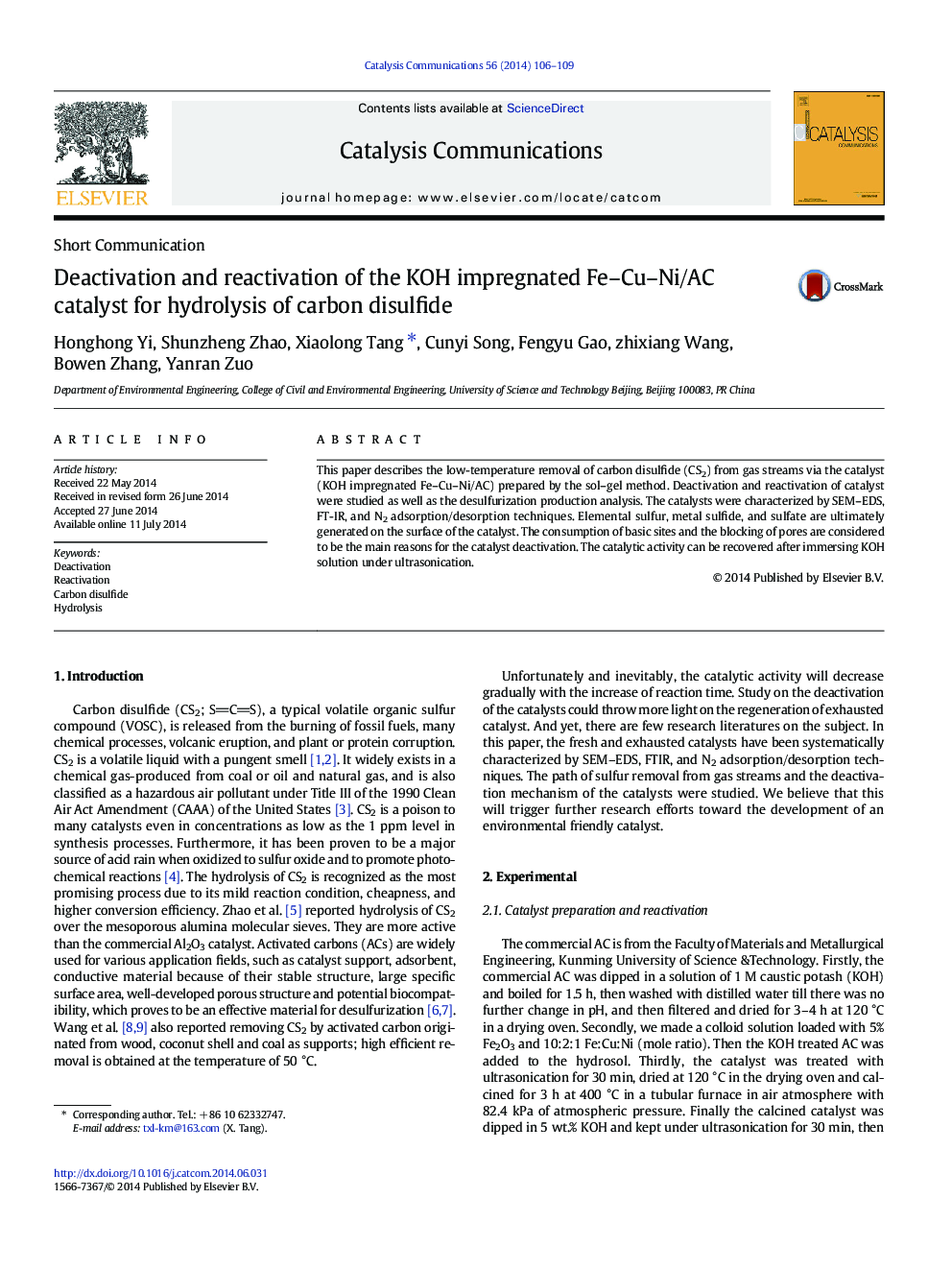| Article ID | Journal | Published Year | Pages | File Type |
|---|---|---|---|---|
| 49438 | Catalysis Communications | 2014 | 4 Pages |
•Fresh, deactivated and reactivated catalysts were characterized by various methods.•The mechanism of deactivation of catalyst for CS2 hydrolysis was analyzed.•The influences of reactivation methods on catalytic activity were studied.
This paper describes the low-temperature removal of carbon disulfide (CS2) from gas streams via the catalyst (KOH impregnated Fe–Cu–Ni/AC) prepared by the sol–gel method. Deactivation and reactivation of catalyst were studied as well as the desulfurization production analysis. The catalysts were characterized by SEM–EDS, FT-IR, and N2 adsorption/desorption techniques. Elemental sulfur, metal sulfide, and sulfate are ultimately generated on the surface of the catalyst. The consumption of basic sites and the blocking of pores are considered to be the main reasons for the catalyst deactivation. The catalytic activity can be recovered after immersing KOH solution under ultrasonication.
Graphical abstractFigure optionsDownload full-size imageDownload as PowerPoint slide
